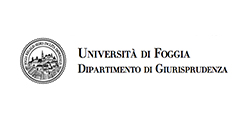The authors of the article consider the issue not only as the basis for building mandatory functions in the field of social security, but also as a tool for the uniform distribution of social security factors. For this, an analysis was performed, which uses the mechanism of the initial analysis of equality and on this basis the limits that require legislative consolidation are determined for the use of restrictive mechanisms. The article discusses the definition of equality and, accordingly, the restriction of rights in the generic concept and highlights the foundations of regulation and the restriction of inequality at the level of fundamental documents of the state. Practical significance is determined by the fact that mechanisms for ensuring equal opportunities are identified and principles for regulating the sufficiency of social security are formed for citizens who experience discriminatory influence both from the state and from individual citizens.
Divieto di discriminazione come principio di sicurezza sociale nel contesto di garantire pari diritti e opportunità
Gli autori dell'articolo considerano il problema non solo come base per la creazione di funzioni ob-bligatorie nel campo della sicurezza sociale, ma anche come strumento per la distribuzione uniforme dei fattori di sicurezza sociale. Per questo, è stata eseguita un'analisi, che utilizza il meccanismo dell'anali-si iniziale dell'uguaglianza e su questa base i limiti che richiedono il consolidamento legislativo sono determinati per l'uso di meccanismi restrittivi. L'articolo discute la definizione di uguaglianza e, di con-seguenza, la restrizione dei diritti nel concetto generico e mette in evidenza le basi della regolamenta-zione e la restrizione della disuguaglianza a livello dei documenti fondamentali dello stato. Il significato pratico è determinato dal fatto che vengono identificati i meccanismi per garantire pari opportunità e si formano principi per regolare la sufficienza della sicurezza sociale per i cittadini che subiscono un'in-fluenza discriminatoria sia dallo stato che dai singoli cittadini.
Contenuti correlati
- Council of Europe Convention on the Protection of Children against Sexual Exploitation and Sexual Abuse Lanzarote
- Proposta di Direttiva U.E. (COM)2012, 12.3.2012
- Proposta di Direttiva U.E. sul diritto dell'arrestato ad un avvocato e a comunicare con familiari/datore di lavore
- Direttiva 2012/13/UE del Parlamento Europeo e del Consiglio, 22.05.2011











